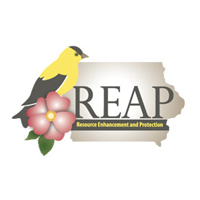Underground Railroad Teacher's Guide
The Underground Railroad wasn't underground and it wasn't a railroad. It' was a network of people who supported freedom seekers, the routes they traveled and the places they stayed. Let's learn more about Iowa's role.
Iowa Core Standards
Social Studies
- SS.5.26: Analyze Iowa's role in civil rights history.
- SS.2.20: Determine the influence of particular individuals and groups who have shaped significant historical change.
Discussion Questions
- Iowa was a “free state,” why was slavery still an issue here?
- When freedom seekers arrived in Iowa, they weren’t safe. Why not?
- How might freedom seekers have known where to go when escaping slavery?
- Why might it have been important to have a secret language to discuss the Underground Railroad?
- Why might it have been important not to keep records who passed through specific locations on the Underground Railroad?
- What similarities and differences do you see between each of the sites of the Underground Railroad in Iowa?
- The strategy of the Underground Railroad sites in Iowa was to “Get ‘em in, get ‘em out.” Why was it important to keep the freedom seekers moving? Where were they trying to get?
- What roles and responsibilities might each person in a family who lived at an Underground Railroad “station” have in preparing for freedom seekers?
Suggested Activities
- Iowa Freedom Trail Project | State Historical Society of Iowa: Explore the resources from the Iowa Freedom Trail Project, which include readings for students as well as primary and secondary source material.
- Explore an Underground Railroad location in Iowa or the State Historical Museum of Iowa.
- Teaching With Primary Sources Toolkit: Grades K-5 | State Historical Society of Iowa: This resource from the State Historical Society of Iowa has excellent teaching resources for educators related to the use of primary sources, including activities and helpful ways to manage discussions.
Additional Resources
- Iowa Freedom Trail Project | State Historical Society of Iowa: The Iowa Freedom Trail Project is a collection of artifacts, places and resources to explore the Underground Railroad in Iowa. Additionally, there is an opportunity to volunteer with the Iowa Freedom Trail Project in order to assist in research.
- Network to Freedom | National Park Service: The Network to Freedom is a project which seeks to honor, preserve and promote the history of the resistance to slavery. There are over 700 Network to Freedom Locations, including over 20 sites in Iowa.
- The Lewelling Quaker Museum: The Lewelling Quaker Museum is a museum that focuses on three big moments in American history: pioneer living, the Underground Railroad and the origins of the Pacific fruit industry, which is surprisingly connected to Iowa.
- The Jordan House | West Des Moines Historical Society: The Jordan House is one of the oldest structures in Polk County and was built by James C. Jordan, an influential politician and abolitionist in Iowa in the mid-1800s.
- The Todd House | Tabor Historical Society: The John and Martha Todd House was built in 1853 and was an important place to stop for freedom seekers escaping slavery in Missouri, usually traveling through Kansas and Nebraska before entering Iowa. In the 1850s, Tabor, Iowa, was filled with individuals who were sympathetic to freedom seekers and a crucial stop for those seeking freedom in the North.
- The Hitchcock House: The Reverend George B. Hitchcock House was a unique, sandstone house built in southwest Iowa in the mid-1800s. Evidence suggests that the Hitchcock House and the nearby Nishnabotna Ferry House were important and strategic stops for those on their journey to freedom in the North.
Funding for Find Iowa provided by:



